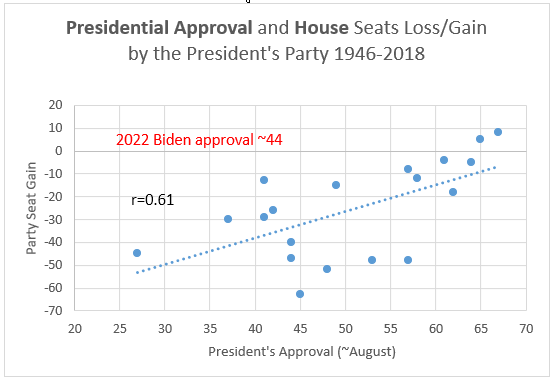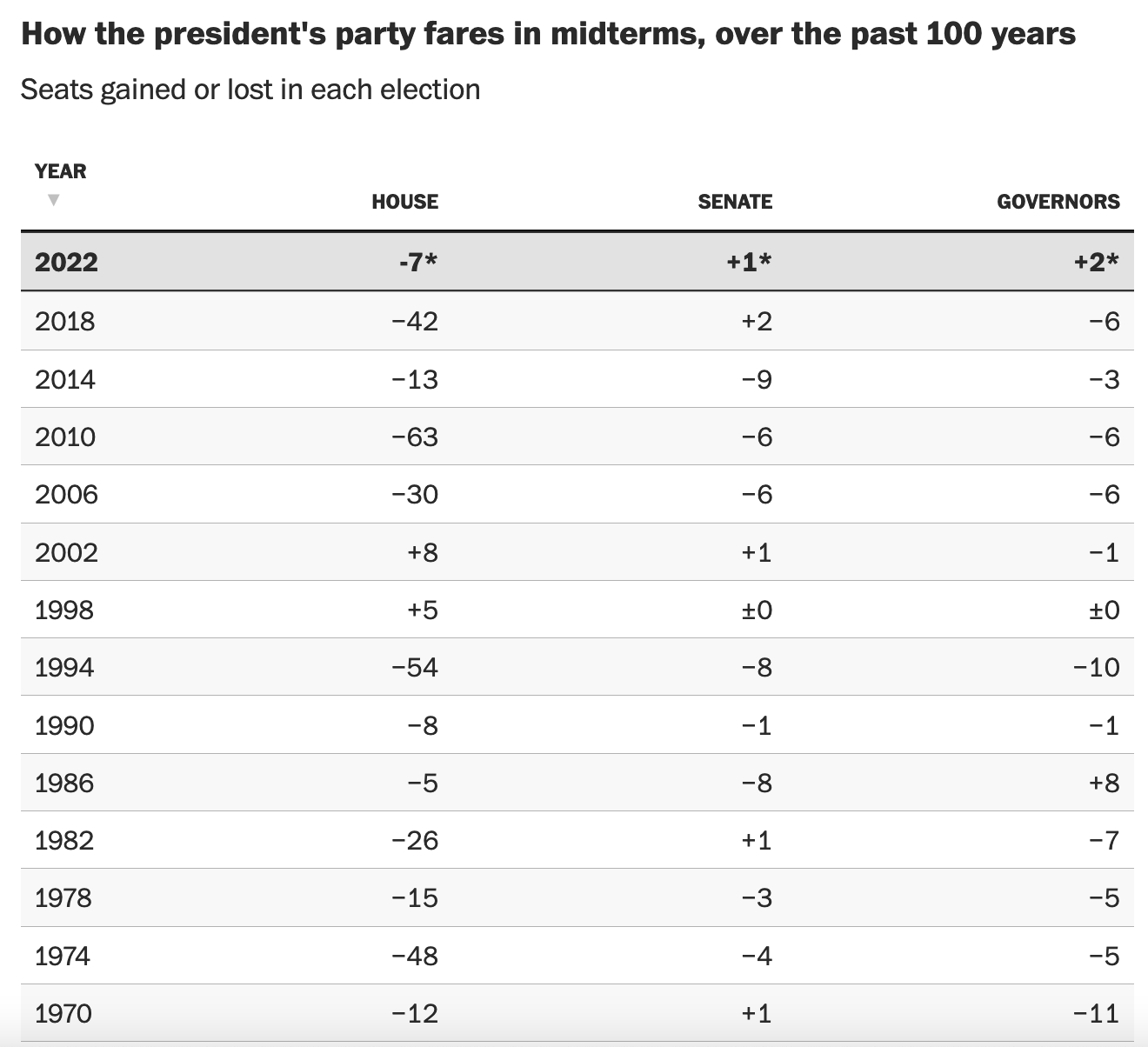Midterm Election House Changes
Critical Analysis
According to the visual above, since 1982, how many times has the house shifted (added seats) towards the president’s party?
According to the visual above, since 1982, which president had the biggest midterm loss of House seats?
In the 22 midterm elections from 1934 -2018, the President's party has averaged a loss of 28 House seats and four Senate seats. The president’s party gained seats in the House only three times, but gained seats in the Senate on six occasions. The president’s party has gained seats in both houses only twice. Based on this information and the visuals above and below*, draw a conclusion about what usually happens to the president’s party in midterm elections.
Historically, presidential approval gives a good indication of how the president’s party will fare in a midterm election. According to Gallup Polling, Joseph Biden had an approval rating in August of around 40%. Based on the visual below*, approximately how many House seats should the Republican Party have gained in this midterm?
Many votes have yet to be counted and many races are too close to call, but as of Tuesday Nov. 15 at 8:43 a.m. (see below*) it looks like Republicans have picked up 5 seats in the U.S. House and lost 1 in the Senate. If the final House vote count adds +5 R how will that compare to midterm election trends since 1982?
Despite the lackluster election showing, Republicans will still likely grab a narrow majority in the House (again, we don’t know for sure yet). Let’s imagine the Republicans do win a House majority, how will that change the leadership and committee assignments in the U.S. House of representatives?
If the Republicans gain control of the House majority, according to this NPR report (listen below) and this USA Today story, what are some likely policy or investigation goals they will pursue?
Although the final votes are still not counted, it looks likely that the Democrats will still control the Senate. How will that control allow them to protect President Biden from a potential Republican controlled House?
The opposition party has lost Senate seats in just six of the past 25 midterms. On average, the opposition sees a gain of four seats. Republicans have currently lost one seat. (The GOP could ultimately gain one seat or even two if the final three races break for them in Arizona, Georgia and Nevada, but Democrats appear well-situated to keep their majority.) Why do you think the Democrats did so much better than expected?
We live in a federal system and we didn’t only vote for House seats in the 2022 midterm election. Over the past 25 midterm elections, the opposition party (the Republicans in 2022) on average has gained 4.5 governor’s seats. Republicans are currently down three, their only remaining potential pickup is Nevada (votes are still being counted). This would be the first time since 1986 — and only the second time since 1934 — that the opposition party has had a net loss of governor’s seats. Additionally, the opposition party has gained state legislative chambers in every midterm election held since 2002, flipping an average of more than 12 chambers. Republicans have currently lost at least three chambers — both chambers in Michigan, and the Minnesota state Senate — and the Pennsylvania House of Representative. Why do you think Republicans also fared poorly in statewide races?
Learning Extension
Action Extension
Contact the winner of your U.S. House district race and congratulate them on their victory. With your teacher’s permission, ask your representative to come and talk to your class/school about why they won and how they plan to govern.




